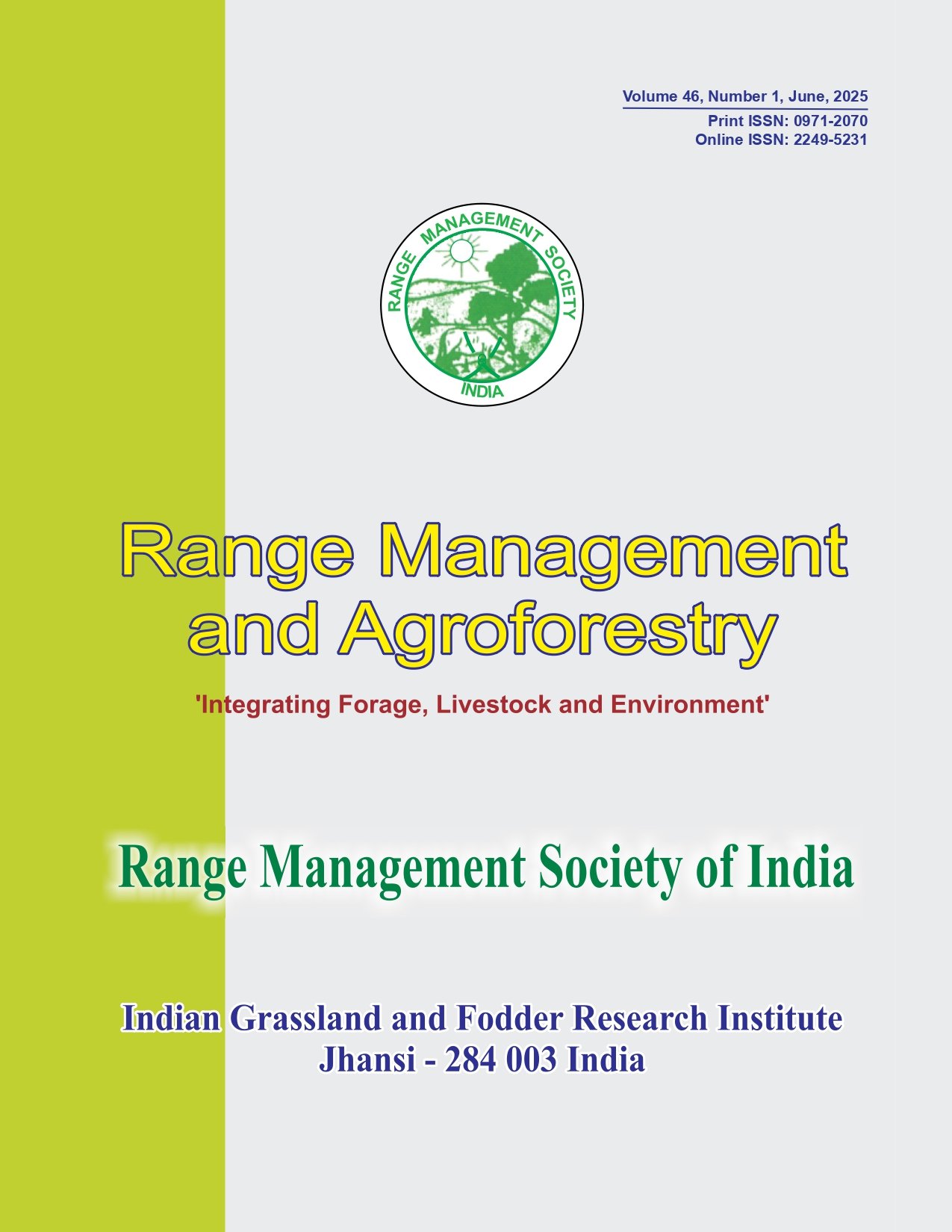Effect of intercropping on forage yield and quality of Zea mays L. in Saiha district of Mizoram, India
Keywords:
Dry matter, Intercropping, Land equivalent ratio, Maize, Quality forageAbstract
Local maize (Zea mays L.) was intercropped with common bean (Phaseolus vulgaris L.), turmeric (Curcuma longa L.) and roselle (Hibiscus sabdariffa L.) as field experiments to evaluate the effects of intercropping on forage yield and quality of maize in East Kawlchaw, Saiha, Mizoram. The dry matter (DM) yield in maize increased by 26.51 to 43.18% in 2008 and 3.80 to 16.44% in 2009 in intercrops than the sole crop. On the contrary, the average acid detergent fibre (ADF) and neutral detergent fibre (NDF) contents in maize significantly (P<0.05) decreased in intercrops than the sole maize crop in both years increasing digestibility of forage. The crude protein (CP) in maize was highest (88 g/kg) when intercropped with bean and lowest (64 g/kg) with turmeric. Cropping also resulted in higher soil organic carbon (by 7.77 to 28.64%), microbial biomass by 6.23% (maize) to 22.9% (turmeric) than the initial value. Soil microbial nitrogen also got enhanced due to intercropping to a maximum of 87.66% in bean. Land equivalent ratios (LER) were higher in intercropping by 7-26% than sole cropping. Further, intercropping brought stability to the soil health by improving the chemical and biological properties of soil compared to the sole crop.




